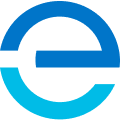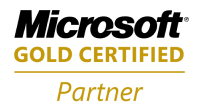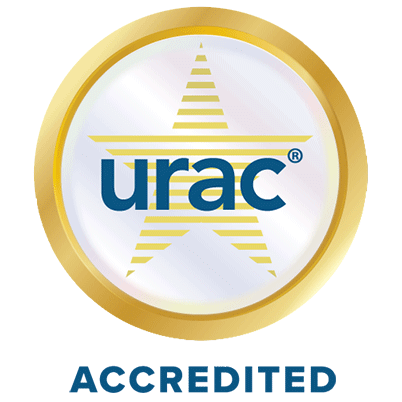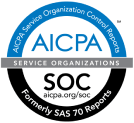By Healthesystems
Pharmacy Benefit Managers (PBMs) are an integral piece of managing the overall utilization, cost, and quality of workers’ compensation healthcare. With prescription drug spend representing approximately 7% of workers’ compensation medical costs, PBMs like Healthesystems are most known for leveraging our technology, clinical expertise, and pharmacy networks to negotiate drug prices, manage formularies, and process prescription drug transactions on behalf of our payer clients.
“On behalf of” is a key phrase here, as we are sometimes viewed as middlemen in the workers’ compensation drug supply chain. However, PBMs can be much more than that, as this position comes with some opportunities to interact with stakeholders across the workers’ comp healthcare ecosystem and ease their experiences.
“Workers’ comp is a high-touch business, and there’s necessity in everything we do,” says Mike McCord, Healthesystems Vice President of Account Management. “PBMs have a significant opportunity to create an exceptional experience for all stakeholders – from the executives and program managers at claims organizations, to their claims staff, to the injured worker.”
Here are four ways PBMs can improve the workers’ comp experience for everyone:
#1. Reducing burden for payers – Workers’ compensation payers often partner with numerous vendors, including a PBM, to enable the multitude of strategies needed to run a high-performing medical management program. “As a vendor, the goal is twofold,” says McCord. “Provide a high level of strategic and executional value while minimizing any ‘noise.’ The last thing you want to do is add to your client’s headaches. Your focus should be on easing or removing complexities and friction wherever you can, while showing up every day to help enable their goals and visions.”
This strategic consultation can be seen in many ways, from bringing forward insights from market and drug trends analysis to recommending strategies that will help tackle evolving challenges head on.
We can also reduce burden by ensuring that our people and technology are optimized for an exceptional customer experience. This means everything from having the right team of experts dedicated to our customers’ accounts, to keeping our own systems healthy and reliable to optimize uptime, performance, and security. It also can mean offering capabilities that require little to no technological resources to implement.
“One key piece of criteria we use today to prioritize product development is assessing the work effort it will take for our clients to ‘turn on’ a new capability,” says Kristine Kennedy, Senior Vice President of Product Innovation at Healthesystems. “With so many competing priorities on payers’ plates, implementing a new solution – even a very appealing or high-value one – can be hindered when resources are limited or otherwise allocated. Offering more ‘plug-and-play’ solutions enables payers to more readily take advantage of new capabilities.”
#2. Providing intuitive claims tools – Workers’ compensation claims organizations have continued to tackle high rates of workforce attrition and turnover, while younger generations indicate reduced interest in the field. With more claims to process and less workforce to process them, claims professionals have increasingly heavy workloads. That’s why intuitive and easy-to-use claims tools are integral to making their lives easier.
The web portal that Healthesystems provides for claims teams to manage prescription drug activity is designed to streamline pharmacy management at every level – from underlying logic that puts the right information in front of the claims professional at the right time to enable decision support, to workflow automation and user-friendly screens that create efficiencies.
“As a PBM, you recognize that you are just one component of a claims professional’s day,” says Kennedy. “In the instances when they have to access your portal to action a prior authorization or review prescription drug activity, it needs to be effortless from start to finish. This may include single sign-on capabilities that make the transition between systems more seamless as well as risk identification tools and corresponding workflows that allow them to quickly action the items of highest criticality.”
Kennedy adds, “An efficient and user-friendly portal should also be paired with capabilities that drive into their existing workflows, such as sophisticated claims integrations directing tasks and updates directly into a payer’s systems, to augmented and guided workflows that embed training in real-time, to simple email alerts. The key is meeting these professionals where they are.”
#3. Standing up an effective Customer Service Center (CSC) – For any organization, a CSC is at the heart of creating a positive experience for customers and the injured workers they serve. A PBM’s CSC potentially serves a number of different stakeholders, from claims teams and injured workers to pharmacies and healthcare providers. For injured workers specifically, this touchpoint can also serve as an important turning point. According to Debbie Hill, AVP of operations at Healthesystems, “Injured workers who call in to our CSC are likely hurting or confused. A kind and empathetic response from CSC personnel goes a long way to ensuring a positive, seamless experience.”
Hill adds, “We may just be one of many touchpoints in their overall journey. But every moment matters in this process, and we do everything we can to ensure it’s a positive one. This includes ensuring we have the people, processes, and standards in place that allow an injured worker to quickly and easily reach a person who is ready to help.”
Healthesystems’ CSC is readily accessible 24/7/365 and always has a live person available to answer the call. It is also a U.S.-based team with personnel trained in house using a formal certification process and ongoing training. Those personnel have deep knowledge of our customers, systems, and processes.
#4. Engaging injured workers – Injured workers must navigate the often-complicated workers’ comp system, and if they don’t have enough guidance, figuring out this complex process can be overwhelming, frustrating, and even demoralizing.
We are meeting injured workers where they are through a mix of high-touch and automated or self-service engagement opportunities that serve as touchpoints in the workers’ comp journey. “Injured workers’ needs don’t only vary from person to person – they will evolve for that individual over the course of their recovery,” Kennedy explains.
For example, when a claim is first opened, timeliness is key. Today’s digital capabilities can quickly put important information in the injured worker’s hands – from Rx card and network pharmacy information to general information about the workers’ compensation process – even making it possible to complete and submit documentation right on their phone.
As the claim progresses, a more individualized or potentially high-touch approach may be beneficial. This may mean targeted, right-time communications to address concerning prescription drug activity, such as physician dispensing. For claims exhibiting prescription drug risk or complexity, this may mean scheduling one-on-one consultations with a pharmacist to discuss a patient’s medications, concerns, and side effects.
“As a PBM, it’s important to be very intentional in engagement with the injured worker and to work collaboratively with our partners,” adds Kennedy. “Where are we plugging into our clients’ larger engagement strategies to ensure we are adding value and improving that experience? Where are their potential gaps and opportunities that we are best positioned to fill?”






